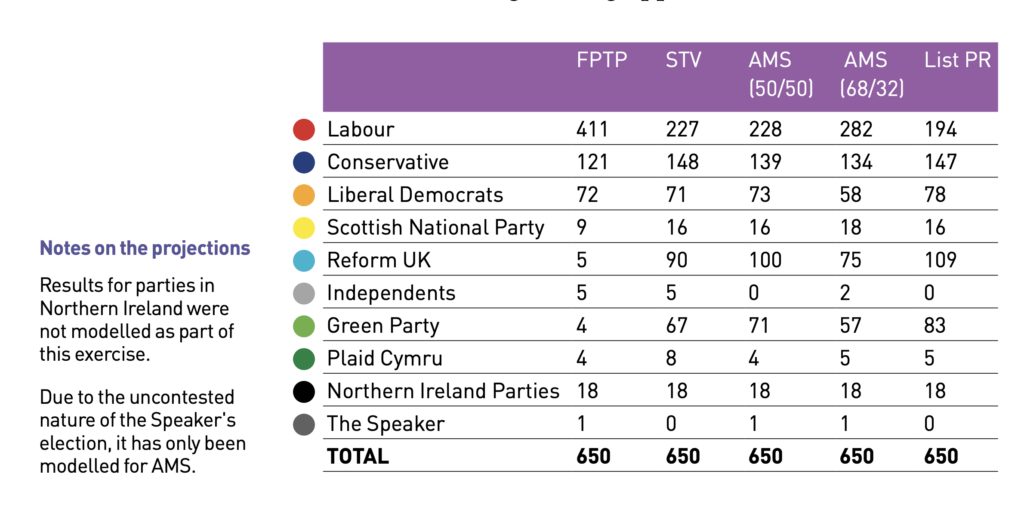How the general election would have looked under different voting systems

The Electoral Reform Society have modelled how July’s election would have looked under different voting systems, as we can see First Past The Post really flattered Labour.
Regretfully they didn’t model using the Alternative Vote which seems a mistake considering Labour uses AV to elect their leaders and the Tories use a form of quasi-AV (the exhaustive ballot) to elect their leaders.
Some key stats from the election are
- 73.7% of votes did not directly affect the outcome in 2024 –21.2 million votes in total.
554 constituencies (85% of all seats) elected their representative on less than 50% of the vote. - 411 seats: that’s how many Labour won with their landslide victory, on 33.7% of the vote – a lower vote share than their election loss in 2017.
- 23.7% was the Conservative’s vote share, making it their lowest ever recorded. The previous low was in 1832 (29.2%).
- 72 MPs is a new record for the Lib Dems. Their vote share was 12.2%, 4.3 points higher than the 7.9% of votes they received when they recorded their lowest ever number of MPs at the 2015 General Election (8 MPs).
- 42.6% of votes went to parties (and independents) other than Labour or the Conservatives, which is a record high.
- 59.9% was the turnout at the 2024 General Election. This is the second lowest voter turnout since universal suffrage was introduced, only narrowly beating the 2001 low of 59.4%.
- 1 in 3 voters said they made a tactical vote instead of voting for their preferred party.
- 344 seats, out of the 650 across the UK, are not Labour/Conservative contests. In these seats other combinations of parties make up the top two contenders.
- 4 parties gained over ten percent of votes (and five parties over five percent of votes) for the first time ever.
The key stats for me is ‘344 seats, out of the 650 across the UK, are not Labour/Conservative contests. In these seats other combinations of parties make up the top two contenders’ and ‘42.6% of votes went to parties (and independents) other than Labour or the Conservatives, which is a record high.’ which makes extrapolating seat predictions from standard voting intention polls very unreliable.
The full report is available here.
TSE